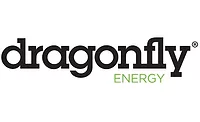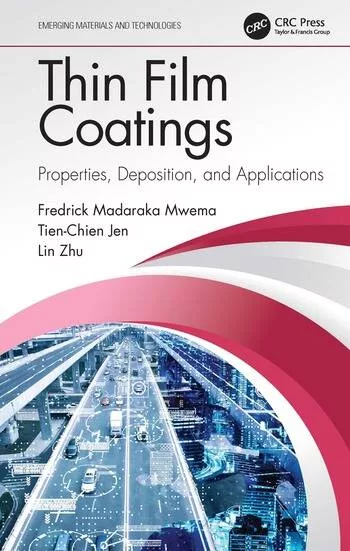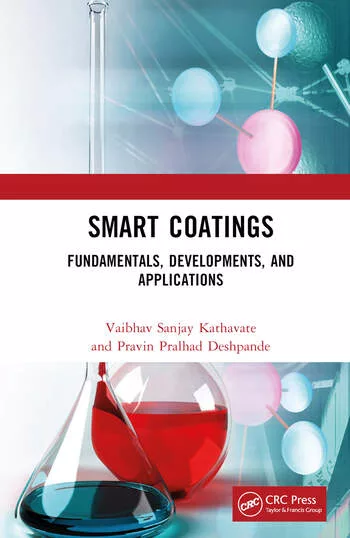Energy-Efficient Insulative Coatings for Battery Cell Applications

3alexd / iStock via Getty Images Plus
The surge in demand for electric vehicles (EVs) has spurred automotive manufacturers to intensify their focus on improving battery performance, leading to significant advancements in battery-related coatings. Among these coatings, energy-efficient and effective insulative coatings play a vital role in ensuring the longevity and safety of battery cells. UV-curable coatings have emerged as a promising solution due to their fast-curing rate, low energy consumption and ease of application.
As the automotive industry shifts toward EVs, there is a critical need for coatings that not only offer excellent dielectric protection but also enhance properties such as durability, adhesion and flexibility. While traditional coatings like PET films have been widely utilized, concerns over delamination and environmental impact are prompting a reassessment.¹ In this context, sprayable UV-cured coatings with low volatile organic compounds (VOCs) and a solid composition are gaining momentum as a viable alternative. These coatings provide comparable dielectric protection to conventional methods while offering thinner profiles and mitigating the risk of delamination.
However, to fully leverage the advantages of UV-curable coatings, the selection of optimal oligomers is crucial. This article underscores the importance of utilizing optimal components in UV-curable coatings for battery cell applications, and explores how these coatings contribute to enhancing energy efficiency, durability and overall performance in EV batteries, thereby propelling the advancement of the electric vehicle industry.
Experimental Setup and Measurement Techniques
The film samples consisted of carefully selected optimal oligomers, monomers, photoinitiators, and additives or fillers. Initially, a mixture of fillers and an oligomer was introduced into a Flacktek® polypropylene high-speed mixer cup and blended for 2 minutes at 2,000 rpm. Subsequently, the blended sample underwent milling using three-roll mills until achieving a uniform dispersion of all additives within the oligomer. Following the milling process, the sample underwent quality assessment for dispersion using a Hegman grind gauge (0-25 µm).
Finally, the remaining components were integrated into the milled sample and the mixture underwent further blending for 2 minutes at 2,000 rpm using a high-speed mixer. The resulting blended resin, applied onto aluminum substrates, was cleaned with toluene followed by an acetone wipe prior to coating, achieving a thickness of 60 µm using a drawdown bar. Subsequently, the films were cured using both an LED light (395 nm) and a fusion lamp (H bulb).
Coated specimens were subjected to aging in both an environmental chamber at 85 °C/85% RH and through electrolyte soaking for up to 4 weeks. Testing on these aged samples was conducted immediately after the aging tests. The coated specimens that had been immersed in electrolyte solvents were dried using cleanroom wipes and alcohol prior to testing.
Flexibility
A conical mandrel test instrument, in compliance with ASTM D522, was employed to evaluate the flexibility of the coatings. The bend tester features a bending lever equipped with a roller that pivots on a steel conical mandrel, offering bend angles of 90° and 180°, and with a diameter ranging from 4 mm to 34 mm. Using the lever, the coated substrate was bent over the conical cone. Subsequently, each sample underwent examination for cracks or crazing.
Adhesion
The adhesion of the coated resins to the aluminum plate was assessed following ASTM Standard D3359 using a crosshatch test. This test involved using a blade to create small squares on the surface of the coatings, with six cuts made in the coating during the first pass, followed by a second pass at 90° to form a square lattice pattern. A transparent tape was then applied over the patterned surface and swiftly removed to determine the amount of coating lifted off by the test tape. The adhesion strength of the crosshatch was rated on a scale from 0 to 5, with 5 representing the highest adhesion strength, as outlined in the ASTM standard.
Pencil Hardness
Graphite pencils of varying hardness were used to assess the surface hardness of the coatings in accordance with ASTM D3363-05. The softest pencil capable of producing a scratch on the coating surface establishes its hardness relative to the pencil scale.
Flexural Modulus (ASTM D790)
Flexural modulus was measured using a three-point bend test on an Instron Dual Column Table Frame, Model No. 5966. Samples were cured in silicone molds with specific dimensions (80 mm × 10 mm × 4 mm) under 395 nm LED light using a Phoseon LED lamp at 30 fpm, intensity of 10, three passes each side. The cured parts were placed in a constant temperature room (23 ± 2 °C, 50 ± 10% RH, per ASTM D618) for 24 hours prior to testing. Data was reported as an average of at least three samples.
Breakdown Strength
The breakdown strength of cured films was determined following ASTM D149, with a ramp rate of 500 V/s. This test employed a 6.35 mm stainless steel ball on a brass substrate immersed in 25 °C silicone oil to reduce electric field nonuniformity and minimize the likelihood of defects. The thickness of the cured film was measured and recorded at each breakdown location. Twenty measurements were taken on each film, and the data were analyzed using a two-parameter Weibull distribution with a 95% confidence interval.
Volume Resistivity
To ascertain volume resistivity, the film thickness was first measured using a Heidenhain Metro length gauge unit (accuracy ± 0.2 µm, measuring range 0-12 mm). Five points within a 1.0 cm² area on each coated aluminum substrate were measured and averaged. Volume resistivity was assessed per ASTM D257 using a Keithley 6517B and 8009 fixture at room temperature. Prior to measurement, a polarity of 500 V was applied to the cured film for 60 seconds with a 2 nA current range to ensure net zero charge.
Results and Discussion
Table 1 illustrates the significance of utilizing optimal oligomers for battery coating applications. Upon comparing the data from Table 1, it becomes apparent that incorporating a flexibilizer into the resin formulation yields improvements across various properties. Specifically, the resistivity values at 500 V for 60 seconds show a slight increase with the addition of the flexibilizer, suggesting potentially enhanced electrical insulation properties. Furthermore, the inclusion of the flexibilizer maintains or enhances adhesion and pencil hardness scores, indicating improved bonding and surface durability.
Notably, the results of the mandrel bend test demonstrate significantly enhanced flexibility for resin formulations containing the flexibilizer, as evidenced by lower diameter range values, signifying a greater ability to withstand bending without experiencing cracking or damage. This underscores the positive contribution of the flexibilizer to both electrical and mechanical properties, rendering it a valuable addition to the resin formulation for battery coating applications where flexibility is a key consideration.
Comparing the data for average adhesion and pencil hardness in Figure 1 across the provided oligomers reveals distinct trends in their performance under various aging conditions. In terms of average adhesion, all oligomers exhibit consistently high scores of 5 initially and throughout the 85 °C/85% RH aging tests, suggesting excellent initial adhesion and resistance to environmental stress. However, during electrolyte soaking, slight variations emerge, particularly for aromatic acrylate functional oligomers, which exhibit lower scores compared to the initial weeks, indicating a potential decrease in adhesion over prolonged exposure to electrolytes.
Conversely, in terms of pencil hardness, the performance varies across oligomers and aging conditions. Initially, PolyBD oligomer 1 demonstrates the highest hardness, while the aromatic acrylate functional oligomer shows the lowest. Throughout the aging tests, most oligomers maintain relatively stable hardness levels, with some fluctuations observed, such as a decrease in hardness for the aromatic acrylate functional oligomer during electrolyte soaking. However, PolyBD oligomers 2, 4 and 5 consistently exhibit higher hardness values across all conditions compared to the rest.
Overall, while all oligomers display robust adhesion initially, variations in hardness performance emerge, with PolyBD oligomers 2, 4 and 5 demonstrating superior hardness properties throughout the aging tests. Thus, polybutadiene-derived urethane acrylates present a balanced mix of adhesion, hardness and resistance to electrolytes.
Figure 2 displays the bend test results at 90 and 180 degrees for both aromatic oligomers and PolyBD oligomers. The data indicate that PolyBD oligomers generally exhibit superior flexibility retention compared to aromatic oligomers across both aging tests at 85 °C/85% RH and electrolyte soaking. Consequently, PolyBD oligomers outperform aromatic oligomers due to their molecular structure, which provides inherent flexibility and resistance to degradation, rendering them more suitable for applications requiring sustained flexibility under harsh conditions such as battery coatings.
Based on the provided data in Figure 3, the adhesion properties across all three oligomers remain consistently high, with initial and post-electrolyte exposure measurements retaining a rating of 5, indicating excellent adhesion. However, when assessing hardness, the high-viscosity acrylated epoxy oligomer exhibits the highest initial hardness at 6, while the aromatic acrylate functional oligomer and medium-viscosity acrylated epoxy oligomer display slightly lower initial hardness values at 4.
Moreover, after exposure to electrolyte and lithium salt at -85 °C for 2 hours, there is a decrease in hardness for all three oligomers, with the high-viscosity acrylated epoxy oligomer retaining the highest hardness at 5. In terms of flexibility, lower values do indeed indicate better performance. Both before and after exposure to the electrolyte and lithium salt aging test, the aromatic acrylate functional oligomer exhibited the lowest flexibility, as evidenced by cracking from 4 to 34 mm after the mandrel bend test at 90°. Following this, the medium-viscosity acrylated epoxy oligomer displayed slightly improved flexibility, while the high-viscosity acrylated epoxy oligomer demonstrated the best flexibility performance.
After subjecting the aromatic acrylate functional oligomer, medium-viscosity acrylated epoxy oligomer and high-viscosity acrylated epoxy oligomer to an electrolyte and lithium salt aging test, slight decreases were observed in both volume resistivity and breakdown strength for all materials, as shown in Figure 4. However, despite these slight changes, all results remained within satisfactory ranges for battery coating applications, indicating the continued suitability of these materials for such purposes even after undergoing the aging test.
The provided data in Figure 5 presents a comparative analysis of resin formulations with different adhesion promoters and thicknesses, focusing on average volume resistivity, adhesion and hardness properties. Commercial phosphate resin formulations consistently exhibit superior performance, showcasing higher resistivity and hardness values across various thicknesses, particularly evident in the 60 µm thickness with two layers.
In contrast, silane adhesion promoters yield notably lower adhesion values and, in some cases, decreased hardness, indicating potential compromises in performance. This highlights the critical role of adhesion promoters in determining the electrical, mechanical and adhesive properties of the resin, with phosphate adhesion promoter-based formulations emerging as the most promising choice for applications requiring robust insulation and mechanical strength.
Comparing the results of aging tests for resin formulated with and without commercial phosphate adhesion promoters, as shown in Figures 6 and 7, both sets of data exhibit trends indicating degradation or changes in material properties over time and under specified conditions. However, the data for resin formulated without adhesion promoters generally show greater degradation, with larger decreases in volume resistivity and breakdown voltage, as well as more pronounced changes in mechanical properties such as adhesion, hardness and flexibility.
This suggests that the presence of adhesion promoters may enhance the stability and performance of the resin under aging conditions, potentially improving its electrical and mechanical properties over time. Therefore, based on the observed trends, the data for resin formulated with adhesion promoters appear to be better, as they indicate a more favorable response to aging conditions and suggest a higher level of overall performance and durability compared to resin formulated without adhesion promoters.
In a separate experiment, a toughened version of tricyclodecane dimethanol diacrylate (TCDDMDA) was evaluated for battery coating applications to improve mechanical properties of formulations. Table 2 compares the mechanical properties of TCDDMDA and its toughened version.
Flexural modulus was measured using a three-point bend test on an Instron. Samples were cured in silicone molds of specific dimensions (80 mm × 10 mm × 4 mm) under 395 nm LED light using a Phoseon LED lamp at 30 fpm, with an intensity of 10, and three passes on each side. The cured parts were placed in a constant temperature room (in line with ASTM D618) for a minimum of 24 hours prior to testing. Data was reported as an average of at least three samples.
TCDDMDA, as the control, had a flexural modulus of 2,876 MPa, while the toughened version had a flexural modulus of 1,672 MPa. Flexural modulus is related to the amount of energy required to bend a material. Strain at break increased from 1.48% (control) to 4.20% for the toughened version, indicating more flexibility in the part without sacrificing flexural strength or hardness.
Hardness of a material is defined as a measure of the resistance to localized plastic deformation. Hardness was measured using a Shore D durometer. The hardness of the control was 89D, while the hardness for the toughened version was 80D. The toughness of the material was four times greater for the toughened version (0.42 J) compared to the control (0.10 J).
The performance of these materials was evaluated for battery insulating coating under aging tests in electrolyte, as shown in Figure 8. The comparison between TCDDMDA and its toughened version reveals significant improvements in several key properties after toughening.
In terms of adhesion, both materials initially exhibited high adhesion scores, but after 168 hours of electrolyte soaking, the toughened version maintained its adhesion better than TCDDMDA. Pencil hardness also showed enhancement in the toughened version, with a shift from 4H to 5H initially and from HB to 2H after soaking, indicating greater resistance to scratches and wear.
Perhaps most notably, the mandrel bend test demonstrated a remarkable improvement in flexibility and durability for the toughened version, as it passed at larger diameter ranges (>14 mm initially and >4 mm after soaking) compared to TCDDMDA (not passed initially and >6 mm after soaking). These findings suggest that the toughened version offers enhanced performance and durability, making it a promising candidate for applications requiring superior adhesion, hardness and mechanical flexibility, particularly in harsh environmental conditions such as prolonged exposure to electrolytes.
Further evaluation was conducted using the toughened version of TCDDMDA for a one-month aging test, including 85 °C/85% RH and electrolyte soaking at 25 °C in the presence of ethylene carbonate, dimethyl carbonate and diethyl carbonate in a 1:1:1 ratio for insulating coating, as shown in Table 3.
The results obtained from the toughened version of TCDDMDA for battery insulation coating during the aging test demonstrate consistently good performance across all properties evaluated. Over the four-week period at 85 °C/85% RH conditions and electrolyte soaking, the average volume resistivity remained relatively stable, indicating the robust electrical insulation properties of the coating. Additionally, the breakdown strength consistently exceeded the required threshold, signifying excellent dielectric strength.
Adhesion, assessed through crosshatch testing, remained strong throughout, ensuring reliable bonding of the coating to the substrate. Moreover, the pencil hardness values indicated enduring surface durability. Furthermore, the flexibility test results consistently passed the criteria, highlighting the coating’s ability to maintain flexibility and resist cracking even under stringent conditions. Overall, the toughened TCDDMDA formulation demonstrated commendable performance in providing reliable insulation and protection for battery applications throughout the aging test.
Conclusion
In conclusion, as the automotive industry undergoes a significant transition toward electric vehicles (EVs), the demand for advanced battery coatings continues to escalate. Within this landscape, Arkema’s UV-curable acrylate resins stand out, boasting exceptional dielectric properties, superior adhesion, flexibility and seamless assembly capabilities — thus meeting the multifaceted challenges posed by EV battery coatings.
The performance evaluation of materials such as oligomers and flexibilizers showed enhancement in both electrical insulation properties and mechanical durability. Adhesion promoters, particularly phosphate-based formulations, significantly enhance the overall performance and durability of resin formulations, as indicated by superior electrical and mechanical properties even under aging conditions.
Additionally, the toughened materials exhibit remarkable improvements in adhesion, hardness and flexibility, making them promising candidates for battery insulation coatings, especially in harsh environmental conditions. Overall, these findings collectively highlight the critical role of material selection and formulation design in ensuring the efficacy and longevity of battery coatings, which are crucial for maintaining performance and reliability in battery applications.
References
- Licari, J. J. Coating Materials for Electronic Applications: Polymers, Processing, Reliability, Testing; William Andrew Publishing: Norwich, NY, 2003.
Looking for a reprint of this article?
From high-res PDFs to custom plaques, order your copy today!








